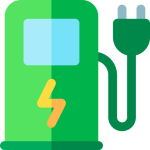
A new turn in federal policy could trigger a fresh round of electric vehicle discounts for Australian buyers as a proposed change to the New Vehicle Emissions Scheme (NVES) shifts how manufacturers’ CO2 performance is measured.
What’s changing – and why it matters
Under the current NVES arrangement, a brand’s combined CO2 emissions are calculated on the basis of how many vehicles it imports. The government is seeking to change that metric so emissions are assessed at the point of sale instead – effectively measuring emissions based on vehicles actually sold to Australian consumers.
That may sound technical, but it has direct commercial consequences. NVES levies fines of up to $100 for every gram per kilometre a brand exceeds its limit, and it issues credits when brands undercut those limits. If emissions are counted at sale rather than import, manufacturers facing potential fines will have a stronger commercial incentive to sell low- and zero-emission vehicles to Australian buyers – potentially by discounting them – rather than simply importing and warehousing them or shifting them to dealer balance sheets to meet compliance targets.
How this could deliver discounts to buyers
Motor Trades Association of Australia CEO Matthew Hobbs says brands are likely to accelerate promotions of low- and zero-emission models as the compliance window approaches. “We may even find there is a new discount season at the end of the year,” Hobbs predicts. In practice, that could mean deeper rebates and incentives on EVs and plug-in hybrids (PHEVs) in the months before annual NVES accounting is finalised, as manufacturers try to grow sales volumes and reduce or eliminate fines.
The change would be particularly consequential for large volume retailers whose line-ups remain heavily weighted toward petrol and diesel models – Toyota, Ford and Nissan are often cited – and less so for EV-native brands such as Tesla and Xpeng. Under the current import-based system, those larger players can import excess EVs to rebalance their fleet emissions and push surplus stock onto dealers without selling to consumers. Counting emissions at the point of sale reduces that option and increases pressure on manufacturers to get EVs into customers’ hands.
Industry reaction and timing
The proposal has support from dealer and retail-focused groups. The MTAA has lobbied for measurement at the point of sale, arguing the change will relieve the pressure put on dealers and strengthen incentives for original equipment manufacturers (OEMs) to supply EVs that consumers actually purchase.
But the approach is not universally welcomed. The Federal Chamber of Automotive Industries (FCAI), which opposed the original NVES legislation, has cautioned against administrative changes before the scheme has even commenced. FCAI chief executive Tony Weber said the industry has been preparing for NVES and that any changes should be considered in the scheduled 2026 review and developed in partnership with industry.
The government, for its part, has framed the adjustment as a step to protect Australian automotive businesses from international manufacturers’ business practices. Small Business Minister Julie Collins said bringing forward this work signals the government’s determination to ensure local businesses are not adversely impacted.
Practical realities for 2025 buyers
Despite the potential for discounts, the change will not affect the NVES accounting for 2025. The government is seeking a bespoke sales-measurement system rather than relying on the industry’s VFACTS data, which does not capture every brand and is managed by the FCAI. That bespoke system requires design and implementation time, meaning any new measurement approach is unlikely to be operational in the immediate term.
In the interim, two outcomes are possible: manufacturers may continue to use existing tactics and timing to manage compliance, or they may begin signalling aggressive end-of-year promotions – a strategy that could concentrate a higher share of EV and PHEV sales into the final months of the calendar year.
What this means for buyers and dealers
Buyers: The prospective change improves the odds of meaningful, targeted discounts on EVs and PHEVs, particularly as manufacturers seek to avoid NVES fines. But those deals are more likely to appear later in the year rather than immediately.
Dealers: Counting emissions at point of sale would reduce the incentive for manufacturers to transfer surplus vehicles to dealer yards purely to meet compliance, potentially easing inventory risk for dealerships.
Manufacturers: Larger OEMs with high-emission fleets will face greater pressure to convert imported EV stock into retail sales, or face potentially larger NVES liabilities.
Conclusion
Shifting NVES measurement from import to sale is a consequential policy tweak with tangible implications for the Australian EV market. If adopted, it should strengthen commercial incentives for manufacturers to convert EV imports into real sales – and that could translate into better bargains for consumers, especially late in the year. However, the change faces industry resistance and administrative hurdles, and it will not be in effect for 2025. Buyers eager for bargains should watch end-of-year promotions closely, while dealers and manufacturers navigate the transition and the broader 2026 NVES review.
FAQs
Q: What is the New Vehicle Emissions Scheme (NVES)?
A: NVES is Australia’s federal scheme that sets fleet CO2 emissions limits for automotive brands. It uses fines for exceeding limits and issues credits when brands emit less than allowed.
Q: How are emissions currently measured under NVES?
A: At present, emissions are measured based on the number of vehicles a brand imports into Australia.
Q: What change is being proposed?
A: The government proposes to measure NVES emissions at the point of sale – counting emissions when vehicles are sold to consumers – rather than at import.
Q: Why would that lead to discounts on EVs?
A: If emissions are counted on sale, manufacturers facing potential fines will have stronger incentives to sell EVs and PHEVs rather than stockpile them, which could lead to increased retail promotions and discounts to stimulate sales.
Q: When will the change take effect?
A: The change is not expected to be in place for 2025. The government is considering a bespoke sales-measurement system and a formal review of NVES is scheduled for 2026.
Q: Who supports and who opposes the change?
A: Dealer and retail groups such as the Motor Trades Association of Australia support counting emissions at point of sale. The FCAI opposes administrative changes before the scheme has started and prefers changes to be considered during the 2026 review.
Q: How will this affect dealers?
A: Dealers may face less pressure to accept surplus vehicles merely to meet compliance numbers if emissions are counted at sale, reducing inventory risk from manufacturer-led stock dumps.
Q: Should buyers wait for end-of-year deals?
A: There’s a reasonable chance manufacturers will concentrate promotions toward the compliance deadline, so buyers seeking discounts may find better offers later in the year.
About EV Evolution
EV Evolution is the leading online platform dedicated to Australian electric vehicle owners and enthusiasts. We foster a vibrant community, delivering essential EV news and insights, and enhancing user engagement through our innovative, AI-powered chatbot for dynamic discussions. Our mission is to empower Australian electric vehicle owners and enthusiasts by fostering a vibrant, AI-driven online community that connects, informs, and advances the nation’s electric vehicle landscape.




